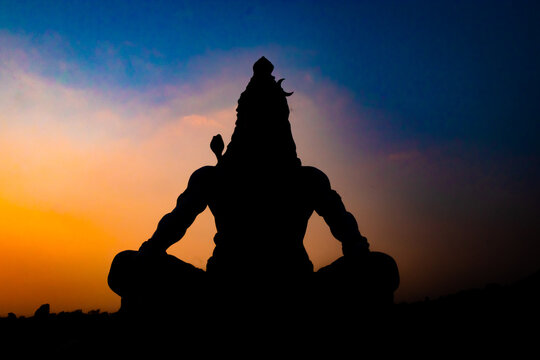Mahamrityunjaya Mantra
History of the MahaMrityunjaya Mantra.
The genesis of the Maha Mrityunjaya mantra lies
in Sukta 59 of the seventh mandala of the Rig Veda, one of the most ancient
Sanskrit scriptures. Its roots intertwine with the saga of Markandeya, to whom
Shiva imparted this chant as a remedy against premature death.
This narrative recounts the tale of Rishi
Bhrigu and Marudmati, fervent devotees of Shiva, who, after years of longing
for a child, were granted their wish by Shiva himself. The divine boon,
however, presented an intriguing choice: a brilliant yet short-lived child or a
less intelligent but long-lived one. Opting for intellect, they welcomed
Markandeya into the world.
To shield their son from the knowledge of his
fate, Rishi Bhrigu and Marudmati concealed the impending doom. Markandeya's
joyful childhood persisted until his 12th birthday, the day his parents chose
to unveil the truth.
In the face of what was to come, Markandeya
turned to Shiva through prayer and meditation. As Yama, the Deity of Dharma,
approached to claim his body, Markandeya clung to a stone Shiva Linga—a
representation of Shiva's divine presence. In that moment of profound devotion,
Shiva manifested.
With compassion and grace, Shiva commanded Yama
to release Markandeya. This divine intervention not only granted Markandeya a
second chance at life but also bestowed upon him the gift of immortality—the
Maha Mrityunjaya mantra. It became a perpetual shield, enabling Markandeya to
defy death's grip and embrace a life infused with divine blessings.
What
happens when you chant Mahamrityunjaya Mantra?
Chanting the Maha
Mrityunjaya brings numerous physical, emotional, and spiritual benefits. The
reverberations of this mantra hold the remarkable capacity to restore
health, dispel negativity, and rejuvenate your entire being.
Maha Mrityunjaya Mantra
OM – It is said that God first appeared as a
microcosm, and then a sound was heard that was audible to the ears, and that
sound was the Pranava sound, the same Omkara. It is a sound form of energy.
Omkaram is the confluence of the letters a-u-ma. ‘A’ is derived from the Rig
Veda, ‘U’ from the Yajurveda, and ‘Ma’ from the Samaveda. Omkara arises from
the confluence of these three. The source tone for Omkara. That tone is
Bhagavad-gita. Omkaram helps us as a prayer.
TRIAMBAKAM is the third eye replica of Shiva for the past, future, and present. Lord Shiva is called Trinetra because he has Indra, Agni, and Samatatva. Triambaka means three eyes. The microscopic eye in the center of Lord Shiva is the third eye. It is the abode of the supernatural. This is called Jyotirmath. The third eye of Shiva has both incendiary and life force. YAJAMAHE means, “meditating”.
SUGANDHIM refers to His fragrance. “Su” means
Good, and “Gandha” means Fragrant substance. Lord Shiva shows love to all his
devotees like a good Fragrant substance spreads its aroma.
PUSTIVARDHANAM means nurturing to be healthy
and strong.
URVAAROKAMEVA: ‘URVA’ means big and powerful or
deadly. ‘AAROOKAM’ means ‘Disease’. Thus URVAROOKA means deadly diseases.
Urvarookam also means Cucumber. Just as the cucumber is liberated from its
stalk when it ripens, so the Lord saves us from all troubles.
MRITYORMOOKSHEYA means We want the Lord to
protect us from problems and even from death. Death is not just physical death.
Being spiritually unconscious is also tantamount to death.
MAAMRITAAT means please give me some Amritam to
get out of the death inflicting diseases as well as the cycle of re-birth.
Also Read : Shri shiv tandav stotram



Comments
Post a Comment